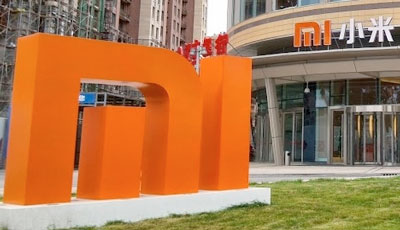Xiaomi’s Phones Have Conquered China. Now It’s Aiming for the Rest of the World

On May 15, behind the curving, imperial facade of the China National Convention Center in Beijing, a veteran technology executive named Lei Jun walks onstage before a thousand raucous fans and members of the media. It’s a familiar scene everywhere now, and like many technology chiefs, Lei peppers his talk by ticking off some of the recent successes enjoyed by his company, the mobile device maker Xiaomi. Sales have been higher than expected; more than 50 million people use the company’s MIUI operating system. Then he gets to the new products, which today are a smart TV that can be controlled with an app and an Android-powered tablet computer, called Mi Pad, that comes in five colors and is priced to undercut the iPad mini. “I hope through our endeavor we can make Apple feel some pressure,” Lei says.
The crowd reacts to each product revelation as if it’s a World Cup goal. The hardware is indeed slick—the TV has the latest high-def specs, and the tablets are the first devices to use the newest processor from chipmaker Nvidia (NVDA). But Lei is delivering another, more potent message. He’s effectively giving an hourlong demonstration of an historic moment: China, for the first time, has its own technology brand that consumers truly lust after.
Following the event, the fans mill around in the Beijing smog, taking selfies with their MiPhones, waving Xiaomi signs, trading impressions of the new gadgets. Some made 15-hour trips to be here. Zhi Yuan, 28, who took a seven-hour train ride from Shandong province, proudly shows off his Xiaomi phone, the economical Redmi model. He likes it because it’s easy to use. Lei, he says, “can understand our wishes. He knows what Xiaomi fans want.”
Xiaomi (pronounced she-yow-mee) is one of the fastest-growing tech companies in the world. It’s the sixth-largest handset maker on earth and No. 3 in China, behind Samsung Electronics and Lenovo Group, according to research firm Canalys. Xiaomi’s recent growth is impressive, and its potential is even greater. In 2013, the company says, it sold 18.7 million smartphones almost entirely from its own website, bringing in $5 billion in revenue. Earlier this year, Lei set an internal goal of selling 40 million smartphones in 2014, then raised it to 60 million. In a financing round last August, venture capitalists gave Xiaomi a $10 billion valuation, about on par with 30-year-old PC maker Lenovo and Silicon Valley darlings Dropbox and Airbnb. At the same time, Xiaomi has branched out from smartphones to tablets, the large-screen HDTVs, a set-top box and home router, phone cases, and portable chargers, as well as a $16 white plush toy bunny—Mitoo, the company mascot, who wears a red-starred Chinese army hat.
While the phones and tablets have obvious echoes of better-known products from Apple and Samsung, they’re not clones. Xiaomi’s Mi 3 smartphone, its flagship, is appropriately light and thin (8.1 mm), with nicely beveled curves. A color-popping display from LG and a high-performance Qualcomm processor give buyers the same components they’d find in other top-of-the-line phones. The device runs MIUI, Xiaomi’s own version of the Android operating system. Regular software updates, which come at the end of each week, often incorporate ideas from users. One popular feature, originally suggested on a Xiaomi online forum, activates the flashlight and shuts down the battery-hogging display when a Mi 3 owner holds down the power button for five seconds. “Typically, Chinese companies have been relegated to copycat status,” says Chetan Sharma, a strategic consultant who advises businesses on mobile. “Lei Jun aspires to build a Chinese brand that stands up to the legends of the industry.”
Xiaomi’s real invention is its business model. It sells online, never in stores, and avoids conventional advertising, devoting only about 1 percent of its revenue to marketing. (By comparison, Samsung earmarks 5.4 percent.) Instead, the company relies on China’s social networks, Weibo and WeChat, and the free press Lei gets as a national tech hero. The money Xiaomi saves on marketing lets it buy top-notch components while keeping retail prices down. The Mi 3 costs 1,699 yuan, or $270; the iPhone in China starts at more than twice that. A Mi 3, or any Xiaomi phone, is a great deal if you’re lucky enough to snag one—the latest models routinely sell out. Xiaomi sells handsets in batches, usually of around 100,000. The first Mi 3 release, the company trumpeted, was bought up in only 86 seconds. It’s the technology equivalent of Air Jordans.
By Brad Stone
Source: businessweek





























